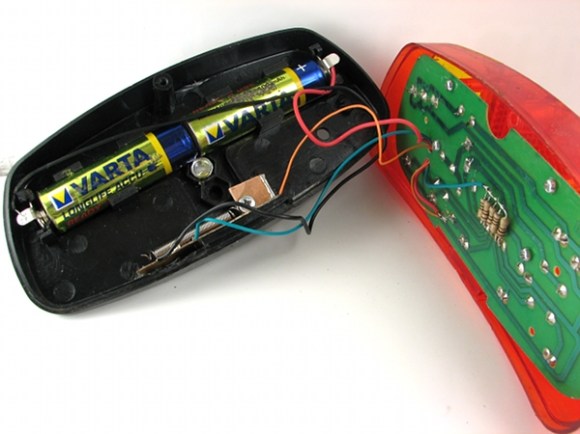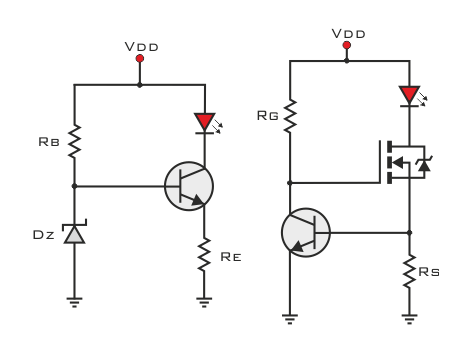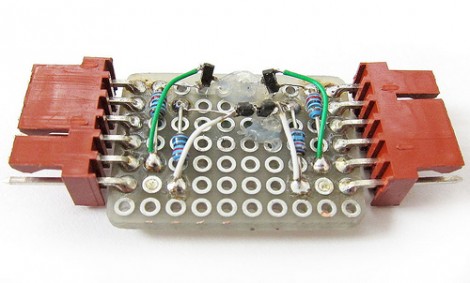
If you’re going to use your bicycle as transportation at night you really must have a head and tail light in hopes that the crazy drivers don’t hit you. For good reason, these lights don’t turn themselves off. But [Miceuz] kept forgetting to shut it down upon arrival and always ended up with dead batteries. His quest for an auto-off feature that actually worked ended in a brilliant and simple add-on circuit.
He first thought about using an accelerometer, but couldn’t find one that fit the bill without also adding a microcontroller. He came up with an even simpler circuit, which can be seen at the base of the black plastic housing. It’s a bit of copper clad board with a small spring attached. The spring completes an RC timer circuit which drives a MOSFET. When that circuit is charged, the MOSFET connects power to the bike light. When the cap runs out the MOSFET threshold cuts power and everything turns off. Since the spring jiggles while he rides it provides the momentary connection necessary to charge the capacitor. Stay stationary for about 30 seconds and the auto-off kicks in.
















